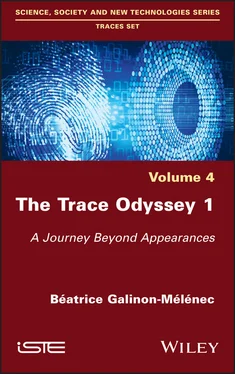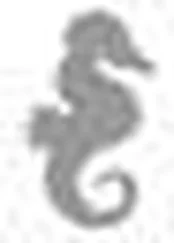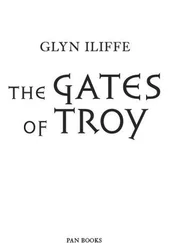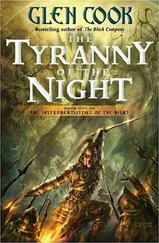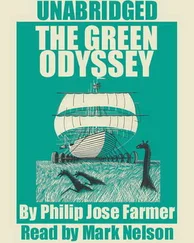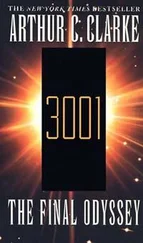In all the above cases, it is the anthropologically centered trace, that is to say a part of reality where humans recognize the process that engendered them in the more or less recent past, or that engenders them still (through actions in the present that have conséquences-traces later on, e.g. “managing one’s own digital traces).
In all these cases, the interpreter is a human being, i.e. an Homme-trace , endowed with a corps-trace that opens the person up (and closes the individual off) to the space of the senses.
I.9. Objective of The Trace Odyssey : following the trace interpreted as a consequence
As was mentioned previously, we seek to study the facet of the trace that assimilates it to that of its consequence 34.
To show the scope of such a choice, we present a generative path of the meaning of the conséquence-trace by considering it in a systemic dynamic between an individual and reality, and/or between individuals, the whole placed in interactions situated in space and time.
We are aware that by restricting the work of this approach, we limit the analysis of the complexity of the concept of traces ontologiques 35. It should therefore be seen in the light of the other works in the Traces set of books 36and in the perspective of the Palo Alto movement, where the concept of trace is found in the analysis of everyday communication situations and their conflicting interpretations, such as those described by Watzlawick et al. (1979) in the case of interpersonal communication.
I.10. Confronting points of view
In Figure I.2 37, below, cause and effect can, a priori , illustrate a simple causal relationship: a behavior of X (the husband) is considered to provoke the response of Y (the wife). The case of the interviewed couple expresses their disagreement on the place of X and Y in the cause-effect relationship. X and Y carve out the succession of cause-effect relationships differently, leading them to produce divergent points of view. Watzlawick et al. (1979) show that it is a question of punctuation , of different choices in carving out the sequence of interactions.
Take a couple struggling with a marital problem [...]. The husband contributes to it with his withdrawal and passivity, while the wife contributes with her aggressive criticism. When talking about their frustrations, the husband will say that withdrawal is his only defense against anger, the wife will qualify this explanation as a gross and deliberate distortion of what is “really” happening in their relationship. She criticizes him because of his passivity [...]. Their confrontations are reduced to a monotonous exchange of such messages: “I retreat because you are angry” and “I am angry because you retreat. (Watzlawick et al. 1979, p. 54, section 2.42, author’s translation).
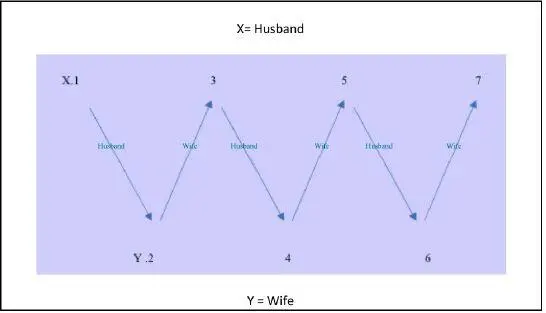
Figure I.2. Disagreement on the cause-consequence relation
The sequence is repeated: the husband (arrow from 3 to 4) retreats, because his wife is bad-tempered (arrow from 2 to 3), and so on. The wife (arrow 2 to 3) is bad-tempered because her husband is retreating (arrow 1 to 2). Each one thinks that their behavior is the consequence of the other’s, which is the only cause. Thus, any communication sequence between two people is an interaction.
In the following chapters, we see that the differences in the way reality is carved out, depending on the individual, do not only apply to interpersonal communication. They are found in all the “ capta ” of the reality, constructed from “points of view” based on the analysis of the difference in the orientation and focus of attention 38. This leads to changing the point of entry in the reception of reality that each individual has.
The “points of view” of some can always be questioned by others, without however, these alone being able to cover the totality of reality, whose “character does not depend on what anyone may think” (Peirce 2002, p. 54) 39. We shall return to this later, based on the Indian fable of the Blind Men and the Elephant .
NOTE.– The main theme of The Trace Odyssey questions the dynamic processes – linked to traces – that lead to different interpretations of the same reality.
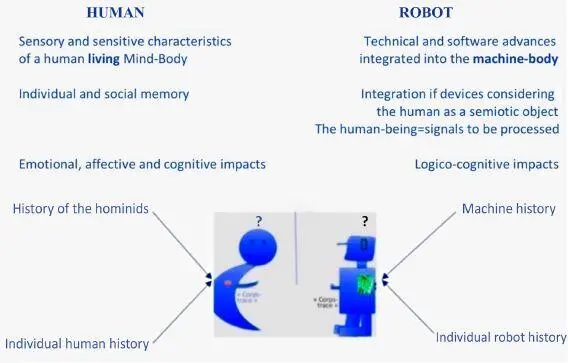
Figure I.3. The human–robot relationship: individualities of a different nature (source: Galinon-Mélénec 2018). For a color version of this figure, see www.iste.co.uk/galinonmelenec/traceodyssey.zip
The example illustrated above by the conflict between husband and wife is frequently found in human relationships. That having been said, what about in human–robot relationships?
As we see in the following pages of The Trace Odyssey , even when the relationship is fluid, it is important to bear in mind that, as shown in Figure I.3, the two individuals are not of the same nature. Their “ corps-trace ” do not carry the same life history. A human being is part of the history of hominids –which includes all the experiences of living beings –whereas robots are part of the history of machines with artificial memory. The human body is far superior and more complex in its functioning compared to that of a machine, if only because of the emotions, affect and pain that intervene in reaction to the stimuli a person receives.
The Trace Odyssey explores the consequences of this human–robot relationship and provides an opportunity to demonstrate that:
– human–machine interactions produce traceable conséquences-traces in both;
– the robot, because of its different nature, can only substitute human beings in cases where the task transfer does not present a probability of risks that is greater than its benefits for humans.
I.11. Social construction in the face of confronting points of view
By comparing the basic rules of physics with the dynamics of social fields, we can put forward interesting hypotheses that explore: when constructing modes of social links between humans, the interpretations of human-traces interact with each other. Some become attracted to each other and are likely to come together in order to shape fields whose:
– limits are defined by the interpretations they repel and reject; and whose
– internal interactions give rise to specific operating rules with an objective to protect the field and the place of those who initiated the rules.
Here we find the constitution of social fields, as described by Bourdieu (1989) in his book Distinction .
In The Trace Odyssey 1 , we note that the conséquences-traces of these interactions can be found at all scales of the field, such as social “practices” (including those related to the use of digital technology) and “communicating” behaviors (Galinon-Mélénec and Martin-Juchat 2008) of what we call “ corps-traces ”.
Interactions between fields are likely to produce their evolution at the margin, then their transformation. The evolution of these fields bears the trace of the forces at work. Some develop more rapidly than others, resulting in an increase in the mass of people who share a certain point of view (Boltanski et al. 1971):
– on the one hand, a mass of great importance – which we shall name A – produces an energy that may seem sufficient to impose its point of view on other fields. In this category, we could place the mass of interactions that are consolidated from an economic, financial and market point of view considered as dominant (ibid.); and
Читать дальше
